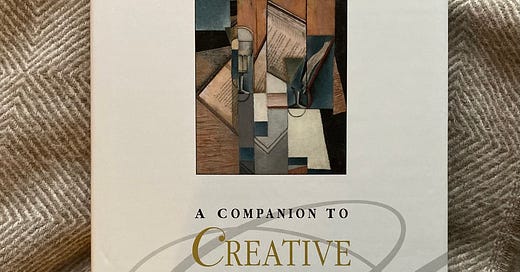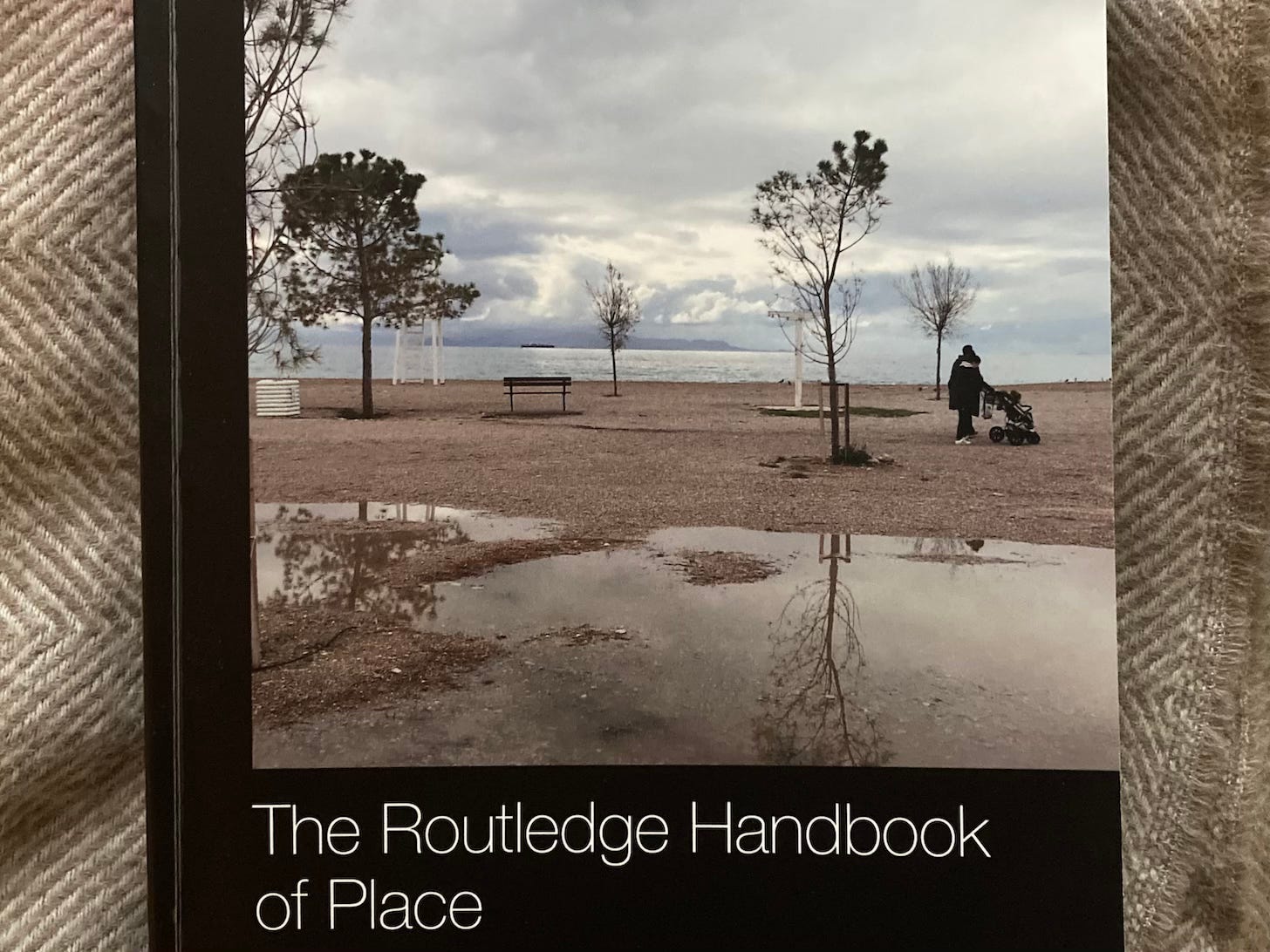Narrative non-fiction, creative non-fiction, and literary non-fiction
What’s the difference?
In this Substack we celebrate the art and craft of Place Writing. Do you want to be inspired? Join our band of readers and writers who love everything about place and home. Subscribe now and get fortnightly posts delivered to your in-box for free.
Creative non-fiction
What’s the difference between narrative non-fiction, creative non-fiction, and literary non-fiction? Not a lot apparently; many instructive websites suggest that these phrases are synonymous. During discussions with people interested in writing for pleasure, and for professional purposes, I’ve noted that the word ‘creative’ causes confusion. Surely, ‘creative’ and ‘non-fiction’ are conflicting terms; a truthful account must be non-fiction, and when you’re being creative it must be fiction. If we draw a straight line between these two positions, I think we can put creative non-fiction somewhere in the middle, beside narrative non-fiction and literary non-fiction. In this ambiguous space we give ourselves licence to ‘play’, but we must also obey certain rules.
First, our writing must be predicated on facts.
Second, the reader must be confident in the writer’s honesty.
And, third, comprehensive research must be undertaken, and evidenced—this backs up the first two points.
Perhaps a definition from researcher and teacher, Bronwyn T. Williams, taken from A Companion to Creative Writing helps:
Creative nonfiction locates its power in our desires for knowledge and narrative (…) [It brings] together the relating of events, people, and places that are the province of journalists, historians, and biographers, with the narrative techniques and lyrical tools of novelists and poets. (p25)
The ‘creative’ part, then, is relevant to how we recount facts. Creative non-fiction writers aim to entertain and many techniques from fiction are employed, such as re-organising a time line, (it doesn’t have to be chronological), or incorporating pieces of introspection by the author/narrator, (the omniscient narrator rarely features in creative non-fiction). It’s also worth thinking about what to leave out as much as what to include. Many fascinating nuggets of research will be unearthed, but not all will interest the reader. So, by strict editing, the story is strengthened and we can bring about drama. My own experience proves this last point; I provided sixty thousand words of a book-length creative non-fiction work for my thesis and I have another document of similar length which contains all the words and ideas I edited out!
Veracity in Creative non-fiction
When I first came across the term ‘creative non-fiction’ I was perplexed by the aspect of truth. How much leeway does the writer have in this respect?
To learn a bit more I read Truth in nonfiction, a selection of essays edited by a well-known champion of the form, David Lazar. Whilst it is not acceptable to make up facts, it is possible to imagine scenarios (so long as this is clearly marked as being so), but I was only partly reassured. One of the essays Lazar includes in the collection is written in the style of a fairy tale. How can this be creative non-fiction? Well, if Lazar suggests it is then I’m going to keep an open mind. More clarity is given in another of the essays, however, by memoirist, Vivian Gornick, who says personal narrative is ‘a tale taken from life’, and that it ‘has the same responsibility as the novel (…) to shape a piece of experience out of the raw materials of one’s own life so that it moves from a tale of private interest to one that has meaning for the disinterested reader.’ (p8) She states (in respect to memoir) that ‘without shape you have diary entries, analytic transcripts, police blotter descriptions: you do not have memoir’. (p9)
Additionally, poet and scholar
puts forward a case for the imagination in her contribution to The Routledge Handbook of Place. She says that persuasiveness is valid, and that ‘we might understand a location as much through myth and legend as through measurable data or the more easily verifiable narratives offered by history’. And, coining the term ‘ghost-rhetoric’, Mort suggests that stories can ‘sit alongside—or, in some cases, even overwrite—historically accurate or quantitatively provable narratives.’ (p645) Permission to use anecdote, myth, or third-hand accounts, allows the creative non-fiction writer plenty of scope to produce interesting pieces of work. So, the fairy tale essay is not quite so absurd...Creative Writing PhD
For myself, I put my specialist genre of writing—Place Writing—in the creative non-fiction category. This is simply because my academic studies have taken me down this route. My Doctorate is a PhD in Creative Writing—a catch-all term. I would have preferred the qualification to be more specific and a PhD in Creative Non-fiction Writing would have suited me better because my writing sits in the non-fiction arena of life-writing, specialist subjects such as Place Writing, and personal essays.
Place Writing
There is very little critical commentary out there on Place Writing (hence my own research, and this Substack). The word ‘creative’ is really important as there is clearly quite a bit of licence to be imaginative in this form of writing, and this is not so obvious when you see the headings ‘narrative non-fiction’ or ‘literary non-fiction’.
What do you think?
Narrative non-fiction? Creative non-fiction? Literary non-fiction?
Do these terms confuse you?
Do you have a preference?
Do you notice any differences between them?
I look forward to chatting with you in the comments!
Notes & References:
I chose to write ‘non-fiction’ hyphenated though, as you see above, it can be written without the hyphen; consistency is crucial.
Photos are my own.
Here are the references for the books I mention. Affiliate links take you to my online bookshop but these books may be obtained elsewhere:
A Companion to Creative Writing (2013). Edited by Graeme Harper.
Truth in Nonfiction (2008). Edited by David Lazar.
The Routledge Handbook of Place (2023). Edited by Tim Edensor, Ares Kalandides and Uma Kothari.
If you’ve enjoyed this post, tap the heart to let me know! Thank you!







I think the history behind these terms is also interesting. Creative Nonfiction was coined by Lee Gutkind as a rebranding of New Journalism and it took hold. Also called long-form journalism or narrative nonfiction. I, too, share some of those concerns about veracity, including my own, which is part of why I am so drawn to it. It being creative nonfiction or whatever we want to call writing true stories.
Thank you for this thoughtful piece. I think the term creative non-fiction works well for readers and helps them know what to expect, while giving writers the freedom to be imaginative and bring a story alive with their words. For me the term literary non-fiction has little meaning I can grasp whereas narrative non-fiction works okay.